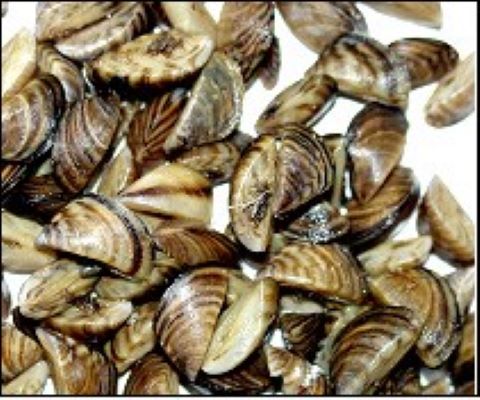Human beings around the world must deal with immigration and the St. Lawrence wildlife is no different. There are more than a hundred species of fish and close to 2000 marine invertebrates that live in the river. To make things worse, there are no borders on the St. Lawrence. On a regular basis, we learn that foreign intruders have adopted the river as their home and we can’t really do anything about it. Very often researchers, in cahoots with reporters seeking sensationalism, will warn us that these foreign species represent imminent danger to our indigenous population. It seems to me that we have heard the same comments when discussing the arrival of human immigrants and refugees.
I am convinced that you all remember the dire warnings about the invasion of the zebra mussel in the St. Lawrence. The invader came from Ukraine and the south of Russia. We were at the beginning of the nineties; these fresh water zebra mussels were not only a danger to our native species but they were going to endanger our water supply by clogging up our fresh water conduits. When was the last time you read about the zebra mussels? The reporters had forgotten, or did not know, that the quagga mussel had shortly appeared after the arrival of its sister the zebra mussel. The quagga knows the zebra very well as they both come from the same region; it is bigger than its sister and interfered with the latter’s invasion.
For decades, analysts warned us about the perils of what was baptized as the Yellow Danger. When I was young, my imagination saw the massive arrival of Asian immigrants when in fact they stayed home and are now in the midst of taking over the world economy. There is an invasion going on but not the one I had in mind. The Asian carp is invading the St. Lawrence River. They were first seen in the Great Lakes and they have now reached the St. Lawrence, the Richelieu and the St. Francois River. The Asian carp feeds on the grass beds and destroys a habitat essential to the survival of our indigenous species. They are also too large for the natural predators of our rivers; a specimen 1.3 metres long and weighing more than 29 kilos was recently caught in Contrecoeur by a commercial fisherman. The immigration of the Asian carp in our rivers represents a serious problem and the authorities are at a loss to solve the problem. I will come back to the Asian carp in a future blog.
But we must be careful for what we wish for; when governments intervene there are very often unintended consequences. A good example is the St. Lawrence striped bass which has now disappeared from the river. Keep in mind that this striped bass is considered a Québécois de souches. (Old-stock Quebecker.) When noticing the dwindling stock of our native bass, the Ministry of Forests, Lands and Natural Ressources seeded the river in 2002, with striped bass originating from the Miramichi River in New Brunswick. These bars from another province love the St. Lawrence and are growing in increasing numbers but, it should be noted, they are not considered as a native species in governmental statistics. What is the difference? They don’t understand French?
Government bureaucrats observe the invasion of our waters by foreign species; they then come up with assumptions as to the reasons for such invasions but they don’t really have answers on how to solve the problem. Why no answers? Because there simply are none that are practical. We must learn to live with these new neighbours that refuse to integrate and assimilate to our species de souches.

